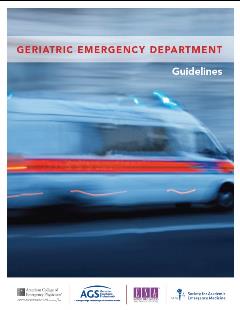Elderly care is best resolved at the primary care level, with a geriatric orientation and in a community setting. However, sometimes older people need to go to the emergency room for a variety of reasons, such as a fracture, fibrillation, retention, sudden choking or blockage, to name just a few reasons. What happens then is easy to imagine, the geriatric patient is subjected to a triage that leads to a box full of devices, with many people asking the same things repeatedly, some of them with very little tact and almost always with little respect for intimacy, not to mention the discomfort caused by the racking in the corridor, bells and alarms, noise from machines and monitors, and a long etcetera, that easily produces the disorientation of the elderly patient, or delirium in the worst cases.
Towards a new design of emergency services specific for the elderly
In the blog of the British Geriatrics Society, Dr. Rosa McNamara advocates for the creation of specific emergency services for the elderly, points out the similarity to what happened a few years ago with the creation of paediatric emergency services. Children, she says, have different psychological, physical, and social characteristics than adults, and need care by nurses and specialized doctors to ensure appropriate treatment. Today it would be unthinkable to have to treat a child in a general emergency room environment and, worse, by nurses and doctors with no experience in paediatrics.
How should a geriatric emergency department be?
American Geriatrics Society and three other scientific societies, also North American, related to emergency services, have together published the document, "Geriatric Emergency Department Guidelines," which provides guidelines for the creation of geriatric emergency services. This is a document that talks about the structural characteristics that the space should feature: the least noisy possible, the cubicles should preserve privacy, the lighting should adapt to circadian cycles (day/night), there should be large and visible analogue clocks on the walls, the floors should be non-slip, anti-decay mattresses, comfortable chairs, there should be handholds in key locations, etc. it’s a matter of defining a space, usually next to the general emergency service, adapted to the geriatric needs. But the structure is obviously not everything, and that is why the document defines criteria for triage, professional functions and protocols to avoid the most common geriatric complications and, above all, what should be the basic training of the assigned professionals (nurses, social workers and doctors).
The first geriatric emergency room opened its doors to Holy Cross Hospital of Silver Spring in the US in 2008, and nine years later there are already hundreds of US hospitals offering this service. That is why it has seemed relevant to me that the British Geriatrics Society has opened the debate on the opportunity to boost geriatric emergency services within the framework of European public services.
Jordi Varela
Editor




No comments:
Post a Comment